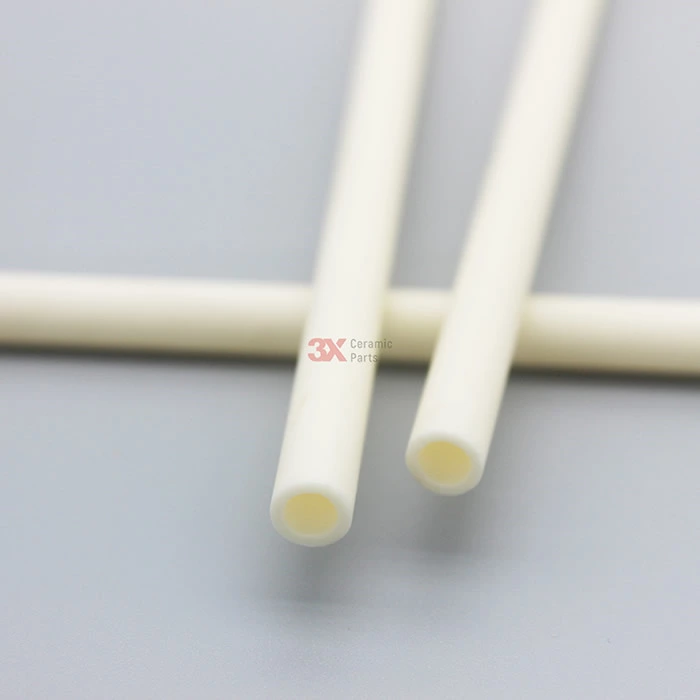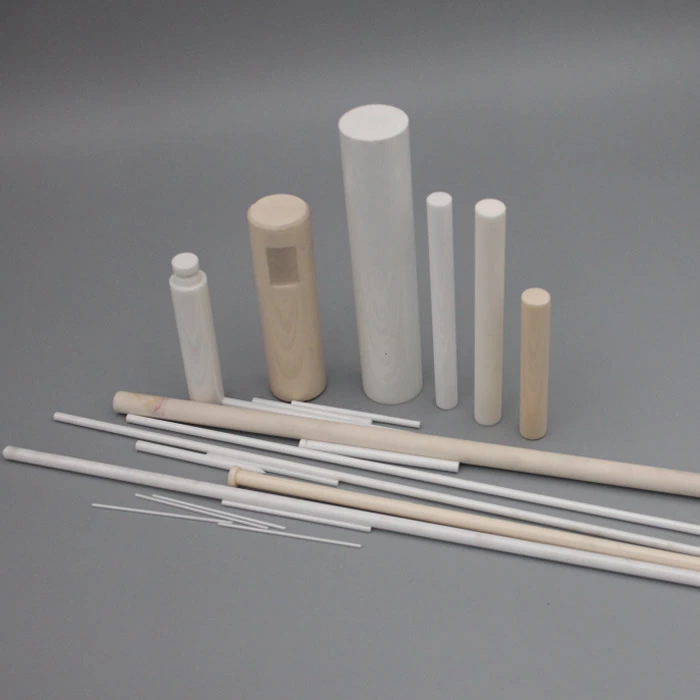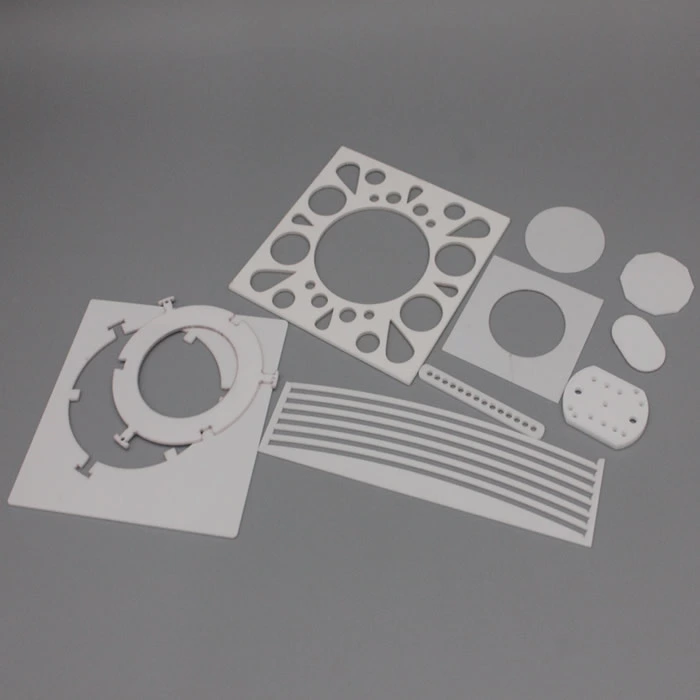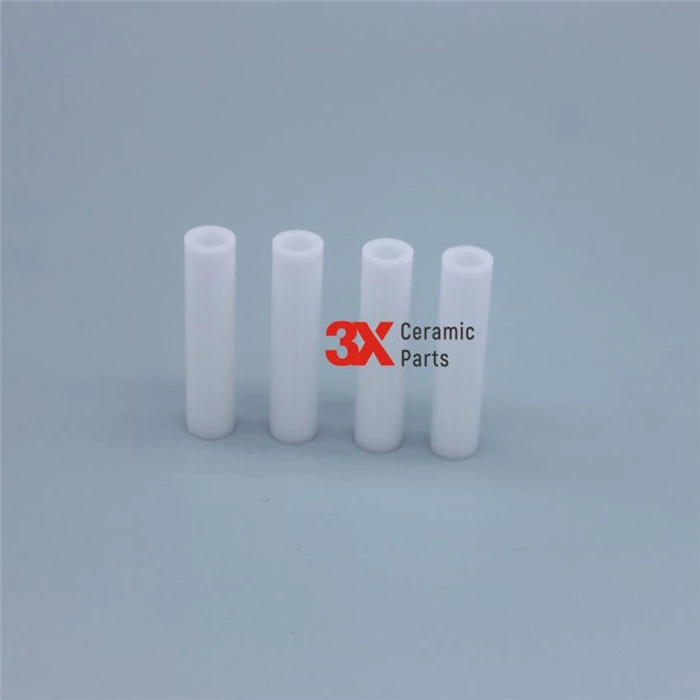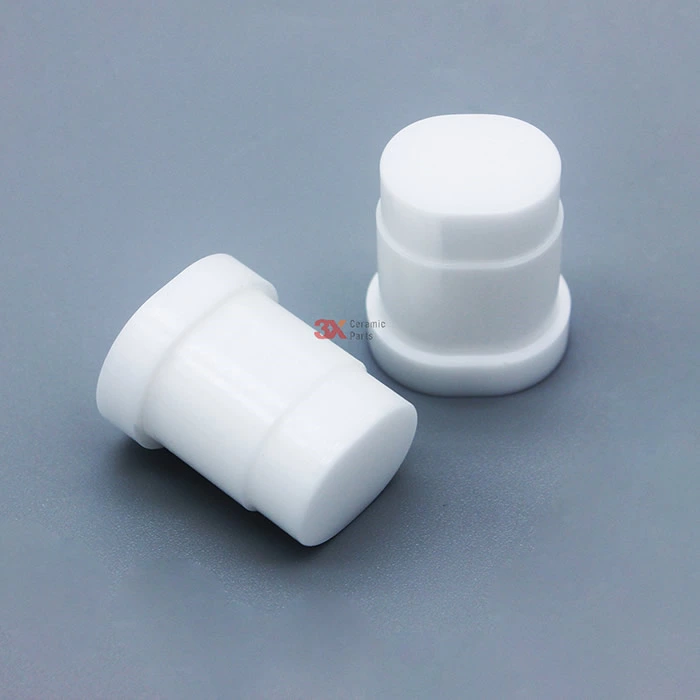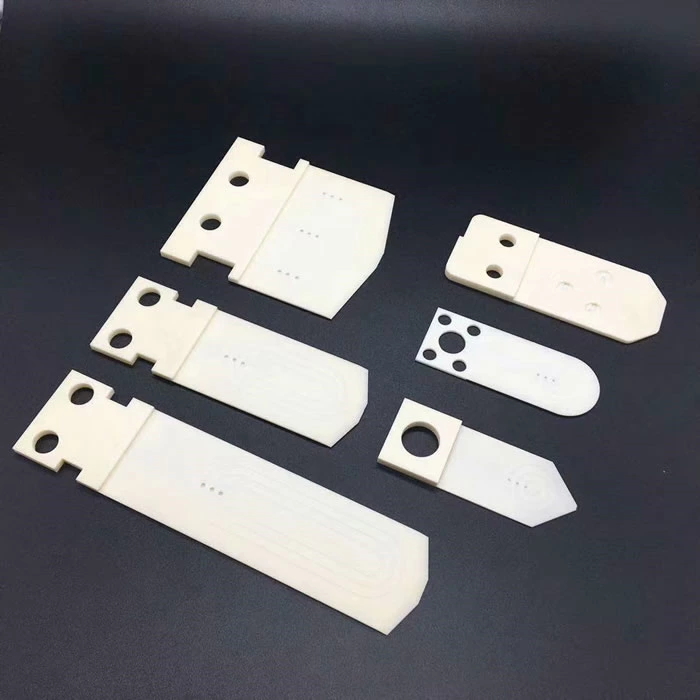AIN substrate is good to use , why its cost is relatively high ?
AIN substrate is good to use , why its cost is relatively high ?
Today, there is no doubt that it belongs to the era of information technology. With the rapid development of microelectronics industry, aluminum nitride (AlN) ceramics have been widely used in the manufacture of VLSI. As a high thermal conductivity ceramic substrate and packaging material, AlN Ceramics have attracted much attention.
Needless to say, aluminum nitride has the advantages that its thermal conductivity is 7 times higher than that of the most widely used alumina ceramics. At the same time, it has low dielectric constant, excellent electrical properties comparable to alumina, thermal expansion rate similar to silicon, high specific strength, low density and non-toxic. Therefore, the "lightness" of electronic components using aluminum nitride ceramics is really enviable. But there are gains and losses. At present, aluminum nitride substrate is facing a big dilemma, that is, the high cost affects its application promotion to a certain extent.
Where do these costs come from? As mentioned earlier, the thermal conductivity of AlN is very outstanding [theoretically up to 320W / (m · K)]. However, due to impurities and defects in AlN Ceramics, the thermal conductivity of the product is far from the theoretical value. Therefore, in order to approach the theoretical thermal conductivity as much as possible and highlight the advantages of AlN itself, manufacturers must check everywhere in the preparation of substrates to avoid obvious performance shortcomings. The improvement of each process and the result of "high cost" are naturally logical. See the analysis below for details.
Preparation of AlN powder
The first is raw materials. AlN powder is used as the raw material for preparing the final ceramic products. Its purity, particle size, oxygen content and the content of other impurities have an important impact on the thermal conductivity, subsequent sintering and forming process of the subsequent products. It is the cornerstone of whether the performance of the final products is excellent or not.
The synthesis methods of AlN powder are as follows:
① Direct nitriding method: in high temperature nitrogen atmosphere, aluminum powder is directly combined with nitrogen to produce aluminum nitride powder, and the reaction temperature is generally 800 ℃ ~ 1200 ℃.
② Carbothermal reduction method: the mixed powder of Al2O3 powder and carbon powder is reduced and nitrided in flowing nitrogen at high temperature (1400 ℃ ~ 1800 ℃) to form AlN powder.
③ Self propagating high temperature synthesis method: this method is the direct nitriding of aluminum powder, which makes full use of the characteristics of direct nitriding of aluminum powder as a strong exothermic reaction. The aluminum powder is placed at the midpoint of nitrogen, and then the reaction is maintained by the high chemical reaction heat between aluminum and nitrogen to synthesize AlN.
④ Chemical vapor deposition method: the volatile compounds of aluminum react with nitrogen or ammonia to precipitate aluminum nitride powder from the gas phase; According to different aluminum sources, it can be divided into inorganic (aluminum halide) and organic (alkyl aluminum) chemical vapor deposition.
Obviously, the process required for AIN Powder with high purity, fine particle size and narrow particle size distribution is either high cost, complex preparation process, low production efficiency, or high equipment requirements. The consequence of this series of difficulties is the rising price of high-quality aluminum nitride powder.
Forming of AlN
There are many forming processes of AlN powder, and the traditional forming processes such as molding, hot pressing and isostatic pressing are applicable. Among them, hot pressing and isostatic pressing are suitable for preparing high-performance bulk aluminum nitride ceramic materials, but they have high cost and low production efficiency, and can not meet the increasing demand of electronic industry for aluminum nitride ceramic substrate. In order to solve this problem, aluminum nitride ceramic substrate has been formed by tape casting in recent years. Tape casting has also become the main basic forming process of aluminum nitride ceramics for electronic industry.
In addition, due to the strong hydrophilicity of AlN powder, in order to reduce the oxidation of aluminum nitride, or avoid contact with water during the molding process, that is, the aluminum nitride ceramic blank needs to be prepared with organic slurry. However, due to the strong volatility of the organic solvent used, it will have adverse effects on the environment and human body and environmental pollution problems; It is not necessary to improve the surface hydrolysis resistance of AlN powder, such as forming a coating on the surface of AlN with the help of hydrophobic and hydrophilic organics, or heat treating AlN powder in a certain oxygen partial pressure atmosphere to form a dense alumina layer on its surface, etc.
Sintering of AlN
The sintering process of aluminum nitride is relatively harsh, and the sintering or hot pressing sintering temperature is often above 1800 ℃. In order to achieve compact sintering, reduce the content of impurities and grain boundary phase, simplify the process and reduce the cost, the key points in the sintering process of AlN Ceramics are as follows: first, select appropriate sintering process and atmosphere; The second is to select appropriate sintering additives.
1. Sintering process
Aluminum nitride has low self diffusion coefficient and sintering is very difficult. There are generally five common sintering processes for AlN substrates.
① Hot pressing sintering: that is, sintering ceramics under a certain pressure can make heating sintering and pressure forming simultaneously, and ceramics with fine grains, high relative density and good mechanical properties can be obtained.
② Pressureless sintering: the sintering process is simple. The general temperature range of atmospheric pressure sintering aluminum nitride ceramics is 1600-2000 ℃. Appropriately increasing the sintering temperature and prolonging the holding time can improve the density of aluminum nitride ceramics, but the strength is relatively low.
③ Microwave sintering: microwave sintering is also a rapid sintering method, which uses the interaction between microwave and medium to produce dielectric loss and heat the whole body.
④ Spark plasma sintering: integrating plasma activation, hot pressing, resistance heating and other technologies, it has the characteristics of fast sintering speed and uniform grain size, but the equipment cost is high and the size of processed workpiece is limited.
⑤ Self propagating sintering: that is, the dense AlN ceramic material is directly prepared by self propagating high temperature synthesis reaction under ultra-high pressure nitrogen. However, it is difficult to obtain AlN Ceramics with high density because Al in the raw material is easy to melt under high temperature combustion reaction, which hinders the penetration of nitrogen into the blank.
Among the above five sintering processes, hot pressing sintering is the main process for preparing densified AlN Ceramics with high thermal conductivity. However, its process is more complex, has high requirements for equipment and low production efficiency, so the cost is naturally higher.
2. Sintering atmosphere
At present, there are three sintering atmospheres for AlN Ceramics: neutral atmosphere, reducing atmosphere and weak reducing atmosphere. Common N2 is used for neutral atmosphere, CO is used for reducing atmosphere, and H2 is used for weak reducing atmosphere.
In the reducing atmosphere, the sintering time and holding time of AlN Ceramics should not be too long, and the sintering temperature should not be too high to prevent AlN from being reduced. The above situation will not occur in neutral atmosphere, so it is generally selected to sinter in nitrogen to obtain AlN Ceramics with higher performance.
3. Addition of sintering additives
In the sintering process of aluminum nitride ceramic substrate, in addition to the process and atmosphere affecting the performance of products, the selection of sintering additives is also particularly important.
AlN sintering aids are generally alkali metal oxides and alkaline earth metal oxides. Sintering aids mainly have two functions: on the one hand, they form low melting point phase, realize liquid phase sintering, reduce sintering temperature and promote green body densification; On the other hand, high thermal conductivity is an important performance of AlN substrate. Due to various defects such as oxygen impurities in AlN substrate, the thermal conductivity is lower than the theoretical value. Adding sintering additives can react with oxygen to complete the lattice and improve the thermal conductivity.
Sintering additives used for sintering AlN Ceramics mainly include Y2O3, Cao, Yb2O3, Sm2O3, li2o3, B2O3, CaF2, yf3, CaC2, etc. or their mixtures. Selecting multiple composite sintering additives can often obtain better sintering effect than single sintering additives, realize AlN low-temperature sintering, reduce energy consumption and facilitate continuous production. In order to find suitable low-temperature sintering additives, manufacturers often need to invest a lot of time and energy in research and development, so this part will also be reflected in the price of AlN substrate.


